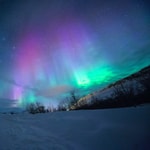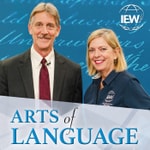Norsk for Beginners – Details, episodes & analysis
Podcast details
Technical and general information from the podcast's RSS feed.

Norsk for Beginners
Marius Stangeland
Frequency: 1 episode/16d. Total Eps: 103

Recent rankings
Latest chart positions across Apple Podcasts and Spotify rankings.
Apple Podcasts
🇩🇪 Germany - languageLearning
23/07/2025#79🇬🇧 Great Britain - languageLearning
22/07/2025#96🇩🇪 Germany - languageLearning
22/07/2025#100🇩🇪 Germany - languageLearning
13/07/2025#70🇬🇧 Great Britain - languageLearning
12/07/2025#87🇨🇦 Canada - languageLearning
02/06/2025#70🇬🇧 Great Britain - languageLearning
02/06/2025#80🇨🇦 Canada - languageLearning
01/06/2025#60🇩🇪 Germany - languageLearning
27/05/2025#96🇩🇪 Germany - languageLearning
26/05/2025#55
Spotify
No recent rankings available
Shared links between episodes and podcasts
Links found in episode descriptions and other podcasts that share them.
See all- https://www.duolingo.com/
147 shares
- https://laernorsknaa.com/
112 shares
RSS feed quality and score
Technical evaluation of the podcast's RSS feed quality and structure.
See allScore global : 53%
Publication history
Monthly episode publishing history over the past years.
8.9 - Oslo
Season 8 · Episode 9
lundi 26 août 2024 • Duration 17:56
Email: Laernorsknaa@gmail.com
Transcript: 8.9 - Oslo – Lær norsk nå (laernorsknaa.com)
Support me here -->
Patreon: https://www.patreon.com/laernorsknaa
Donasjon (Paypal): Doner (paypal.com)
8.8 - Akershus
Season 8 · Episode 8
samedi 10 août 2024 • Duration 14:50
Email: Laernorsknaa@gmail.com
Transcript: https://laernorsknaa.com/8-8-akershus
Support me here -->
Patreon: https://www.patreon.com/laernorsknaa
Donasjon (Paypal): Doner (paypal.com)
Akershus er et lite fylke. Faktisk er Akershus det fjerde minste fylke i Norge i areal. Bare Oslo, Vestfold og Østfold er mindre i areal enn Akershus. Innlandet, som vi snakket om i forrige episode, er over 10 ganger større enn Akershus i areal. Men Akershus er et stort fylke i folketall. Akershus er fylke med flest innbyggere i Norge. Det bor over 700 000 mennesker i Akershus. Det vil si at 13 % av Norges befolkning bor i Akershus.
Akershus er et litt merkelig sted. Det er både veldig landlig, altså mange gårder og skoger, men også veldig urbant nær Oslo. Faktisk er det mange som bor i Akershus, men som jobber i Oslo. Jeg er blant disse. Jeg bor i Akershus, men tar toget inn til Oslo der jeg jobber. Grunnen til dette er at det er mye billigere å bo utenfor Oslo enn i Oslo. Dette har gjort at mange steder i Akershus har vokst mye de siste årene.
De tre største kommunene i Akershus ligger rett ved Oslo. De er Bærum med 130 000 innbyggere og Asker med ca. 100 000 innbyggere. Både Bærum og Asker ligger rett vest for Oslo. Neste på lista er Lillestrøm med 94 000 som ligger nord-øst for Oslo og Nordre-Follo med 63 000 innbyggere som ligger rett sør for Oslo.
Oslo er altså veldig viktig for Akershus. Faktisk er Oslo så viktig at det er Oslo som er administrasjonssenteret i Akershus. Dette er helt utrolig fordi Oslo ikke er en del av Akershus. Det vil si at Akershus er det eneste fylke i Norge som har et administrativt senter som ikke ligger i det samme fylke.
Til og med navnet på Akershus kommer fra Oslo. Navnet på Akershus kommer fra Akershus festning i Oslo. Akershus festning er et slott i Oslo. Grunnen til dette var at Oslo før var en del av Akershus amt. I dag er derimot Oslo sitt eget fylke.
Hva er det som er så spesielt med Akershus da? Vel, det er flere ting. Akershus har noen av de fineste jordbruksområdene i Norge. Akershus er også der du finner flyplassen til Oslo. Oslo lufthavn ligger i Gardemoen i Ullensaker kommuner som altså ligger i Akershus og ikke i Oslo. Men Akershus er kanskje mest av alt kjent for Eidsvoll og det som skjedde der. Kanskje dere husker Eidsvoll fra episode 7.4 om 1814 og norsk uavhengighet fra Danmark? La oss ta en kortversjon av den episoden.
7.9 - Norway in the Cold War (1945-1995)
Season 7 · Episode 9
mercredi 6 décembre 2023 • Duration 19:09
YouTube video of the 1995 incident: https://www.youtube.com/watch?v=NNSr5o5XZXA&ab_channel=LearnNorwegianNow%21
Podcast episode of the 1995 incident: laernorsknaa.com/109-den-gangen-norge-nesten-starta-tredje-verdenskrig
Email: Laernorsknaa@gmail.com
Transcript: https://laernorsknaa.com/7-9-norway-in-the-cold-war-1945-1995/
Support me here -->
Patreon: https://www.patreon.com/laernorsknaa
Donasjon (Paypal): Doner (paypal.com)
For more content to learn Norwegian -->
YouTube: https://www.youtube.com/channel/UCxdRJ5lW2QlUNRfff-ZoE-A
7.8 - The Post-War Period in Norway (1945-1969)
Season 7 · Episode 8
mercredi 22 novembre 2023 • Duration 14:51
Email: Laernorsknaa@gmail.com
Transcript: https://laernorsknaa.com/7-8-the-post-war-period-in-norway-1945-1969
Support me here -->
Patreon: https://www.patreon.com/laernorsknaa
Donasjon (Paypal): Doner (paypal.com)
For more content to learn Norwegian -->
YouTube: https://www.youtube.com/channel/UCxdRJ5lW2QlUNRfff-ZoE-A
Andre verdenskrig tok slutt i Norge den 8. mai 1945 og et nytt kapittel kunne starte i norsk historie. Men hvem skulle styre Norge? Mens regjeringa og kongen var i eksil, laget de en plan for styring og valg da krigen kom til å ta slutt i Norge. De ble enige om å lage en samlingsregjering der motstandsmenn og politiske parti fra både venstre og høyre var representerte. De ble også enige om at det viktigste for Norge var å bygge landet opp igjen etter krigen og forbedre livene til folk med hus og sosiale goder. En sosial gode er offentlige ordninger som skal beskytte folk mot sykdom og alderdom, for eksempel sykehjem eller gratis helsetjenester.
I 1945 ble det holdt valg i Norge. Arbeiderpartiet ble det største partiet i Stortingsavalget, altså parlamentsvalget. De fikk flertall alene og dannet en regjering med bare folk fra Arbeiderpartiet. Arbeiderpartiet, eller AP som det blir forkortet til, har siden vært det største partiet i Norge. Einar Gerhardsen ble statsminister for denne arbeiderpartiregjeringa. Han var statsminister i Norge i hele 16 år totalt i perioden 1945 til 1965. Han var en av de viktigste personene i å bygge Norge etter andre verdenskrig.
7.7 - World War II in Norway (1939-1945)
Season 7 · Episode 7
mercredi 8 novembre 2023 • Duration 26:12
Email: Laernorsknaa@gmail.com
Transcript: https://laernorsknaa.com/7-7-world-war-ii-in-norway-1939-1945/
Support me here -->
Patreon: https://www.patreon.com/laernorsknaa
Donasjon (Paypal): Doner (paypal.com)
For more content to learn Norwegian -->
YouTube: https://www.youtube.com/channel/UCxdRJ5lW2QlUNRfff-ZoE-A
Andre verdenskrig brøt ut i 1939 da Tyskland angrep Polen. Norge erklærte seg nøytrale i krigen. Norge ønsket å holde seg ute av andre verdenskrig, akkurat som de hadde gjort i første verdenskrig. Norge valgte altså å ikke alliere seg med noen av stormaktene i Europa.
Men Tyskland ville ha det annerledes. Nazi-Tyskland, ledet av Adolf Hitler, planla et angrep på Danmark og Norge i 1939. Det var to hovedgrunner til at Tyskland ønsket å okkupere Norge. Den første var at Tyskland ønsket å ha marinebaser i Norge for tyske krigsskip. Fra Norge kunne skipene lettere reise ut mot Atlanterhavet og Nordsjøen. Dermed kunne de true Storbritannia lettere. Den andre grunnen var at Tyskland ønsket å ha kontroll over importen av svensk jernmalm til Tyskland. Jern er viktig i krig, og eksporten av svensk jernmalm gikk via norskekysten.
Den 9. april 1940 angreip Tyskland Norge. Tyskerne angreip med fly og båt. Vidkun Quisling, lederen for det høyreradikale norske partiet Nasjonal Samling, prøvde å gjøre statskupp. Quisling sa på radioen at han ville bli den nye statsministeren i Norge og at Norge måtte legge ned våpnene. Tyskerne krevde at kongen og regjeringa skulle godta Quisling som ny statsminister i Norge.
7.5 - The Union with Sweden, 1814-1905
Season 7 · Episode 5
dimanche 5 novembre 2023 • Duration 13:43
Email: Laernorsknaa@gmail.com
Transcript: https://laernorsknaa.com/7-5-the-union-with-sweden-1814-1905
Support me here -->
Patreon: https://www.patreon.com/laernorsknaa
Donasjon (Paypal): Doner (paypal.com)
For more content to learn Norwegian -->
YouTube: https://www.youtube.com/channel/UCxdRJ5lW2QlUNRfff-ZoE-A
As we discussed in the previous episode, the union between Norway and Sweden emerged in the aftermath of a war in 1814. However, it wasn't a desired arrangement in Norway. It's important to note that this union was distinct from the earlier union with Denmark. Unlike the Danish union, Sweden didn't govern Norway directly. Instead, the majority of governing authority resided in Norway. This meant that Norway retained its own constitution, establishing its independent institutions like the Storting (parliament) and a dedicated government. It was a significant step towards self-determination for Norway.
7.6 - WW I and the Interwar Period in Norway (1914-1940)
Season 7 · Episode 6
dimanche 5 novembre 2023 • Duration 13:56
Email: Laernorsknaa@gmail.com
Transcript: https://laernorsknaa.com/7-6-ww-i-and-the-interwar-period-in-norway-1914-1940/
Support me here -->
Patreon: https://www.patreon.com/laernorsknaa
Donasjon (Paypal): Doner (paypal.com)
For more content to learn Norwegian -->
YouTube: https://www.youtube.com/channel/UCxdRJ5lW2QlUNRfff-ZoE-A
Norge var derfor ikke direkte med i første verdenskrig fra 1914 til 1918. Norge var nøytralt hele perioden. Men Norge ble likevel indirekte trukket inn i krigen. Storbritannia var den viktigste handelspartneren til Norge. Norge fortsatte å drive handel med Storbritannia, men mange norske båter ble senket av tyske ubåter. Dette gjorde at mange i Norge støttet Storbritannia framfor Tyskland i første verdenskrig. Men det var ikke veldig viktig for Norge hvem som vant første verdenskrig. Likevel ble Norge kalt for “den allierte nøytrale” siden Norge handlet så mye med Storbritannia. Dette gjorde at Norge fikk Svalbard i Svalbardtraktaten etter første verdenskrig.
7.4 - 1814, Independence and Constitution
Season 7 · Episode 4
samedi 7 octobre 2023 • Duration 16:33
Email: Laernorsknaa@gmail.com
Transcript: https://laernorsknaa.com/7-4-1814-independence-and-constitution/
Support me here -->
Patreon: https://www.patreon.com/laernorsknaa
Donasjon (Paypal): Doner (paypal.com)
For more content to learn Norwegian -->
YouTube: https://www.youtube.com/channel/UCxdRJ5lW2QlUNRfff-ZoE-A
1814 er kanskje det viktigste årstallet i moderne norsk historie. I 1814 fikk Norge sin egen grunnlov, sin egen konge og sin selvstendighet. Men landet ble også tvunget inn i en ny union i 1814. I denne episoden skal vi snakke mer om 1814 og alt som skjedde i Norge da. Men først må vi snakke litt om hva som skjedde før 1814.
7.3 - The Enlightenment in Norway (the 18th century)
Season 7 · Episode 3
dimanche 27 août 2023 • Duration 16:04
Email: Laernorsknaa@gmail.com
Transcript: https://laernorsknaa.com/7-3-the-enlightenment-in-norway-the-18th-century/
Support me here -->
Patreon: https://www.patreon.com/laernorsknaa
Donasjon (Paypal): Doner (paypal.com)
For more content to learn Norwegian -->
YouTube: https://www.youtube.com/channel/UCxdRJ5lW2QlUNRfff-ZoE-A
Norwegian Enlightenment began in the early 18th century and lasted until the early 19th century. It was a period of significant changes in Norway. New ideas arrived in Norway from other European countries. New plants, like the potato, came from South America. People enjoyed better health and longer lives. This was a period marked by the ideals and values of the Enlightenment, although the Norwegian Enlightenment was not identical to the French. But what was the Enlightenment really?
The Enlightenment was a period in the 18th century when intellectuals in Europe, led by French intellectuals, began advocating for science, freedom, and tolerance. The French philosophers Montesquieu, Voltaire, and Rousseau are especially well-known. In Norway, the Enlightenment was led by priests and bishops.
Priests played a central role as intellectuals in Norway. They formed networks for the collection and dissemination of knowledge. Johan Ernst Gunnerus, the bishop of Trondheim, was particularly important. He was a skilled network builder for Norwegian science and gathered a wealth of historical and scientific knowledge in Norway. Priests also played a crucial role in spreading knowledge in agriculture. This is how the potato was introduced to Norway. Priests, who earned the nickname "potato priests," traveled around Norway and convinced farmers to plant potatoes from South America. Potatoes are highly resilient, and many in Norway had more to eat because of them.
7.2 - Whitch Trials in Norway (1570-1695)
Season 7 · Episode 2
dimanche 23 juillet 2023 • Duration 18:45
Read more (in Norwegian) at:
https://www.norgeshistorie.no/kirkestat/1111-troldomssakene-i-norge.html
https://snl.no/trolldomsprosessene
Email: Laernorsknaa@gmail.com
Transcript: https://laernorsknaa.com/7-2-whitch-trials-in-norway-1570-1695/
Support me here -->
Patreon: https://www.patreon.com/laernorsknaa
Donasjon (Paypal): Doner (paypal.com)
For more content to learn Norwegian -->
YouTube: https://www.youtube.com/channel/UCxdRJ5lW2QlUNRfff-ZoE-A
In this episode, we will discuss which hunts in the period between the sixteenth and seventeenth centuries as they reached their peak between 1570 and 1680. To understand these events, it is crucial to recognize that "witchcraft" and "sorcery" were not entirely new concepts in 1570. What changed was the involvement of the judiciary, which began actively hunting and trying witches in court cases.
Many people have a perception that the Middle Ages was especially brutal and that everything improved during the Renaissance in the 1400s. The witch trials in Europe provide a compelling example that challenges this simplistic view. During the Middle Ages, scholars largely dismissed the belief in witches and sorcery, attributing such claims to illusions and trickery, merely products of people's imagination. However, this perspective gradually shifted by the late 1300s. A belief in "black magic" emerged, which was thought to cause harm to both people and animals. Nevertheless, it wasn't until the late 1500s and 1600s that the witch trials really escalated.
The period between 1580 and 1630 saw numerous witch burnings, with over half of the documented trials taking place during this time. Researchers argue that religious conflicts, political and economic instability, climate deterioration, and repeated periods of famine laid the foundation for the witch hunts. The persecution of witches was theoretically supported by widespread beliefs in the existence of demons and witchcraft. Numerous books were written about witches and sorcery. It is estimated that around 60,000 people were executed for witchcraft in Europe and America, with 310 individuals being convicted and killed for witchcraft in Norway.









